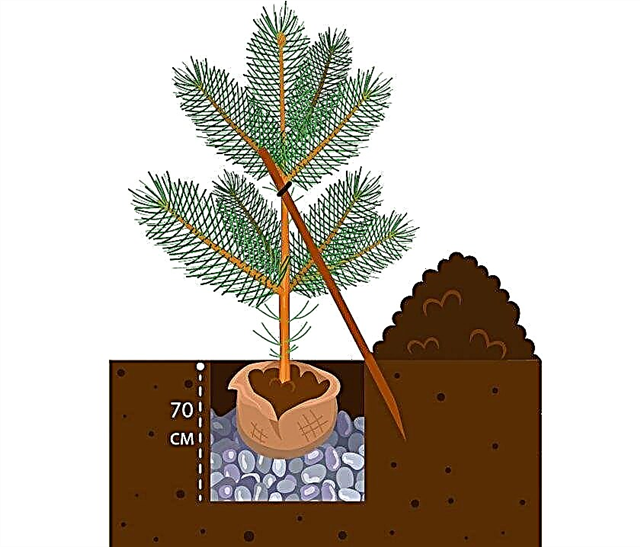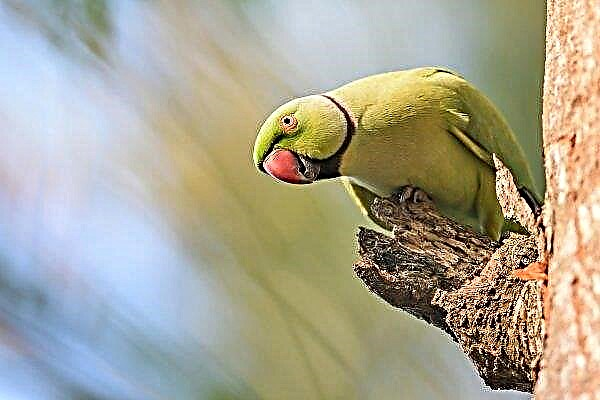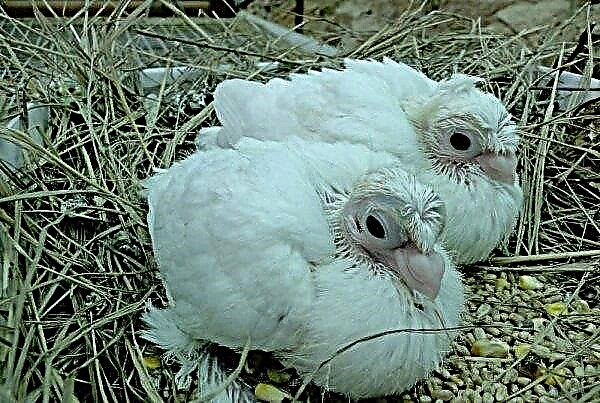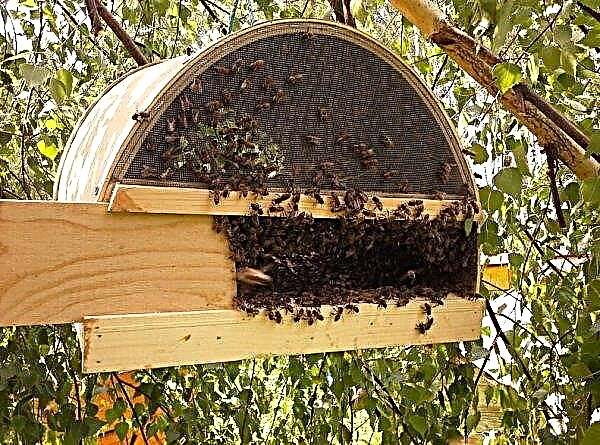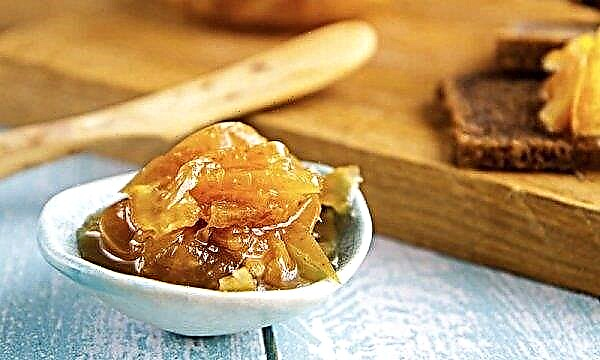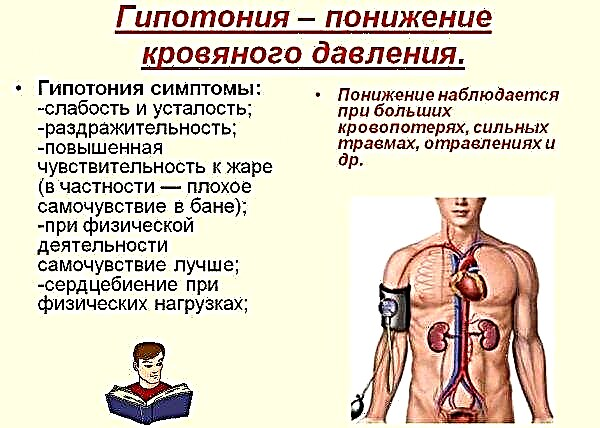Among all potato diseases, one of the most unpleasant and large-scale diseases is cancer, which often leads to a significant decrease in crop yields in a selected area. What kind of problem is this, how to recognize it, and in what ways you can fix it - read about it later.
Description of the disease
The development of tuberous cancer is explained by the activity of the causative agent of the disease, which in this case is the fungus Synchytrium endobioticum (Schilb.) Perc. It damages not only potatoes, but also other solanaceous plants. At the same time, tubers are most affected, so externally the changes will not be noticeable. Under suitable conditions, pathogenic microorganisms remain viable for up to 30 years. In winter, they take the form of zoosprangia (microscopic cysts with a solid surface), and with the advent of heat they turn into zoospores.
The optimal temperature values for the development of pathogens are + 15 ... + 18 ° C, with an increase in humidity up to 80%. More than half of sporangia appears in June or July, when the process of intensive tuberization is most active. Zoospores emerging from cysts move perfectly along the capillaries of the soil, but if no suitable plant is found within 12 hours, introduction into its cells does not occur, and the pest dies.
Important! The causative agent of potato cancer does not tolerate too high or too low temperatures, so if the winter temperature drops reach –10 ° C and held for several days, then spores at a depth of 20 cm are likely to die. This also applies to summer temperature increases up to + 30 ° C.
The successful connection of microorganisms with culture cells leads to their active growth and development, which is promoted by the toxin secreted by the pathogen. Under its influence, neighboring cells quickly grow and divide, actively forming growths, with new zoosporangia in their center. The life cycle of the fungus is only 12-14 days, but even this is quite enough for mass infection of the stands. The most common sources of potato cancer infection are:
The most common sources of potato cancer infection are:
- shoes or clothing of a summer resident on which the fungus may remain;
- a contaminated work tool previously used in an infected place;
- excrement of farm animals eating raw infected tubers;
- melt water;
- small insects and earthworms that introduce spores into the soil, to a depth of 50 cm;
- diseased tubers used as planting stock.
Signs of Potato Damage
The development of cancer of the root crop under consideration occurs in several stages, each of which is characterized by certain changes in the appearance of the tubers: first, small whitish tubercles form near the eyes, then they begin to darken and eventually transform into brown warty growths. In some cases, the size of such neoplasms exceeds the size of the tuber itself and resembles cauliflower inflorescences.
Did you know? The most rare and unusual varieties of potatoes are deservedly considered Linzer Blaue and FranzösischeTrüffelkartoffel: even after heat treatment they retain their rich purple color, giving unusualness to any dish.
Smaller brown tubercles form on the stolons, and large green ones can be found in the leaf sinuses or inflorescences: the flowers grow together into one lump. The roots of the plant do not suffer from fungus, so you can only find out about the problem in the fall, when most of the crop rots in the ground. The surviving tubers can also be damaged, which will become known after a few months of storage.
In rare cases (most often in dry times), potato cancer can take other forms:
In any of these cases, the marketability and taste of the tubers will be reduced, so they are not used to prepare any dishes.
Potato Cancer Control Methods
Potato cancer is an extremely unpleasant disease, so the sooner you find a problem, the greater the chance of a successful solution. Among the main measures to combat the disease, the most effective are agrotechnical and chemical methods, providing for the implementation of a number of standardized actions.
Agrotechnical
If you have already encountered Solanaceae cancer, you probably know that only a part (no more than 30%) of zoosporangia stored in the earth is activated each year, and the remaining amount, together with newly emerging spores, will remain in the soil thickness until next year. The essence of agrotechnical measures is to uncover as many zoosporangia as possible and to destroy the emerging spores due to the lack of a suitable host plant.
To achieve an effective result, you should use one of the following methods:
- Crop rotation with planting corn instead of potato, which is especially important for beds where a disease was already discovered last year (discharge from the rhizome of this culture contributes to the rapid release of zoospores). Also, a good solution would be to plant legumes or erysipelas, which have long been famous for their cleaning effect on the soil.
- Enough fertilizer. Before the spring planting of potatoes in a selected area (including in the quarantine zone), it is useful to introduce manure into the ground at the rate of 300 kg of organics per 1 hundred parts. In greenhouse conditions, granular urea in the amount of 1.5 kg per 1 m² can be used for soil disinfection.
- Timely weed control, especially if they belong to the Solanaceae family.
- Metered watering. In waterlogged soil, spores spread faster throughout its entire thickness.
 Each of these actions can be used for preventive purposes, which will be useful not only to prevent the development of cancer, but also to protect potatoes from other possible ailments of solanaceous crops.
Each of these actions can be used for preventive purposes, which will be useful not only to prevent the development of cancer, but also to protect potatoes from other possible ailments of solanaceous crops.Did you know? The 3.8 kg specimen presented in England at the National Gardening Show in 2010 was the record holder for weight among potato tubers.
Chemical
Chemical methods of combating potato cancer are aimed at preventing the emergence of new foci of illness and provide for the disinfection of the soil with a solution of Nitrafen (2–2.5%) based on the calculation of 20 liters of mixture per 1 m² of plantings. Sometimes chloropicrin (96%) is used for the same purpose - 150 cm³ per 1 m².
However, any of these substances can only be used by specialists in the form of members of special detachments to combat plant diseases or specialists from regional stations for the protection of crops.
Disease prevention
Any disease is easier to prevent than to cope with the consequences of its development. This also applies to cancer of potato tubers, so when planting a crop, in any case, the following recommendations should be considered:
This also applies to cancer of potato tubers, so when planting a crop, in any case, the following recommendations should be considered:
- If the presence of fungus in the selected area has already been proven earlier, you should abandon the planting of potatoes over the next 7-10 years, and so that the land is not empty, you can plant corn, legumes or cabbage on the garden.
- Be sure to comply with crop rotation requirements even in areas where the problems have never been described (the frequency of planting potatoes in the same place should not exceed 1 time in 3-4 years).
- When choosing a site for potatoes, make sure that there are no beds with other Paslenovy ones that have the same ailments next to it.
- Be sure to remove all weeds, avoiding the thickening of potato stands.
- Do not buy planting material from dubious sellers, especially from quarantine zones.
- If a quarantine zone was found near your site, it is more reasonable to plant only cancer-resistant varieties (their continuous planting for 4-6 years will contribute to the complete cleaning of the soil, even if it was infected with a fungus).
- The use of the known varieties Sineglazka and Lorch in the quarantine zone will have to be abandoned for a while, since they will not be able to resist tuber cancer and will only contribute to the appearance of more fungal spores.
And of course, we must not forget about competent care of plants, including control of soil moisture and the composition of fertilizers used.
Potato cancer resistant varieties
All known varieties of potatoes can be divided into several groups: early ripe, mid-early and late ripe. In each of them there are several varieties that are distinguished by increased resistance to cancer.
Early ripening:
- Fresco - semi-spreading variety of Dutch selection. It differs in large round-oval tubers with superficial eyes and yellow peel. Its flesh is light yellow in color, which is preserved by heat treatment.
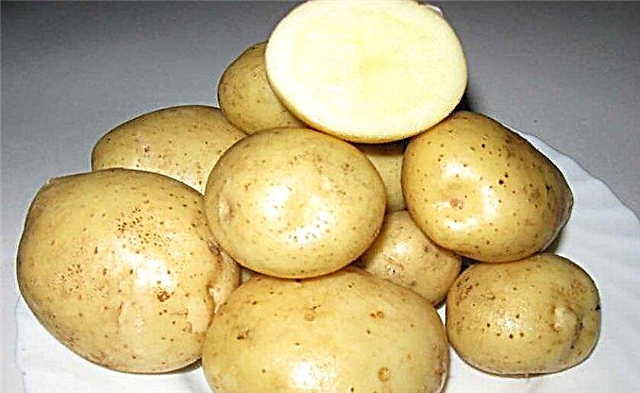
- Pushkinets - a canteen variety obtained thanks to the efforts of breeders from St. Petersburg. The potato bush is erect, with a small number of branches. The tubers are quite large, cream-colored and oval in shape. Their surface is covered with a mesh peel, under which there is a white pulp.
Important! Whatever variety you choose, always consider the storage rules for planting material and the recommended planting dates. Ideally, it is advisable to buy seed potatoes no earlier than a month before the intended planting, especially if there is nowhere to store tubers.
- Zhukovsky - table variety of Russian selection, characterized by semi-spreading bushes of stem type and pink tubers of rounded oval shape. The flesh of this potato is white, fairly dense, slightly watery and does not crumble during cooking. On the surface of the smooth peel of tubers, shallow red eyes are clearly visible.
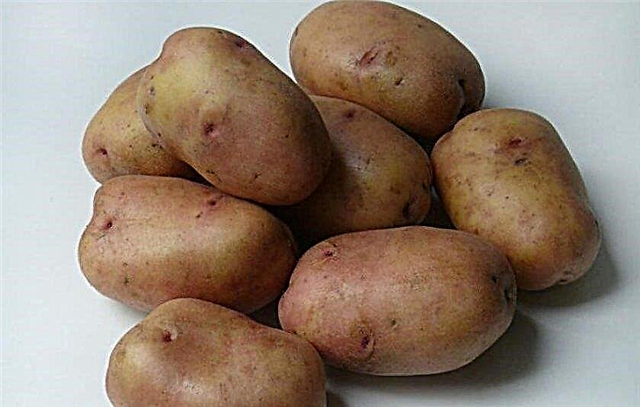
Medium Early:
- Nevsky - Another potato variety of Russian selection with erect stems and oblong-rounded tubers with smooth white and yellow skin and slightly deepened slightly pink eyes. The pale white flesh of the potato retains its color for a long time and has excellent taste properties.
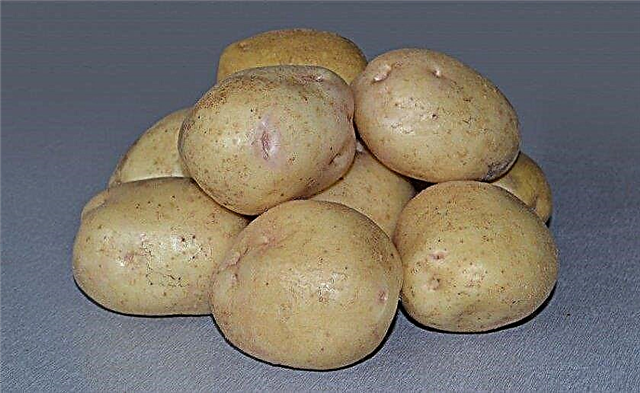
- Condor - Dutch table potato variety. It is characterized by large elongated tubers, covered with a reddish peel with yellow flesh underneath. During the heat treatment, the color of the pulp does not change.
- Santa - Dutch variety, characterized by medium-high compact erect bushes and large tubers. All of them are oval in shape, with a dense and smooth skin that perfectly protects the fetus from mechanical damage. The eyes are almost invisible on the surface, the flesh is pale yellow, with a low starch content (due to this feature, the variety is often used to make chips).
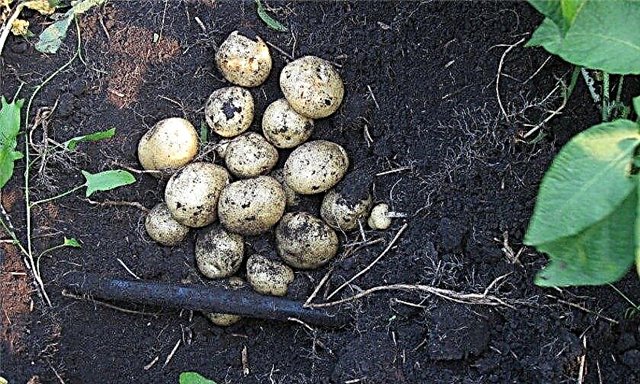
Late ripening:
- Cardinal - a variety of Dutch breeding, which is widespread throughout the world, especially in areas with an arid climate. The bushes of the plant are erect with a large number of elongated emerald leaves. Potato tubers are elongated, with rounded edges and superficial eyes. The peel is smooth and even, pale pink. The pulp is light, more beige color, characterized by good taste.
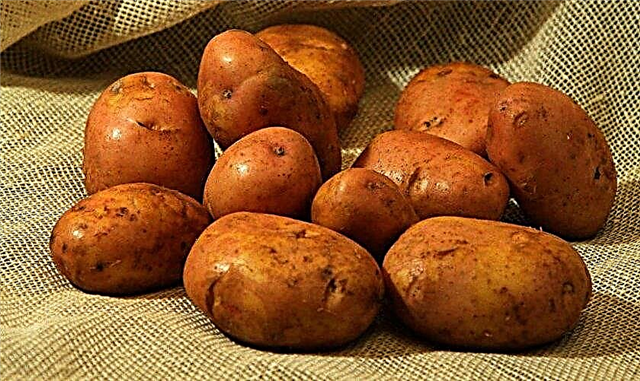
- Glow - Ukrainian variety for universal use with good taste. Its potato bushes are erect, semi-sprawling, tubers are rounded, with a blunt top. The color of the mesh skin is pink, but the flesh is white, does not darken when cooking. Potatoes can be used for any culinary purposes.
- Lassoon - A variety of Belarusian selection, characterized by powerful tall bushes with stiff leaves. Tubers are large (100-200 g each), round oval, with a light yellow peel and middle eyes. The flesh of the potato tastes good and is equally suitable for making crisps and regular mashed potatoes.

The danger of disease to humans
Potato cancer is not a human ailment and does not pose a threat to human health. However, the disease adversely affects the condition of the tubers, making them unsuitable for consumption. If someone wants to eat a damaged vegetable without pronounced taste, then the worst that threatens the body is diarrhea.
Potato cancer is one of the most serious ailments that can ruin your crop. That is why it is worthwhile to make every effort to prevent this problem in your area, and if the fungus still gets on the garden, try to find it in a timely manner by periodically digging up the ripening tubers.








